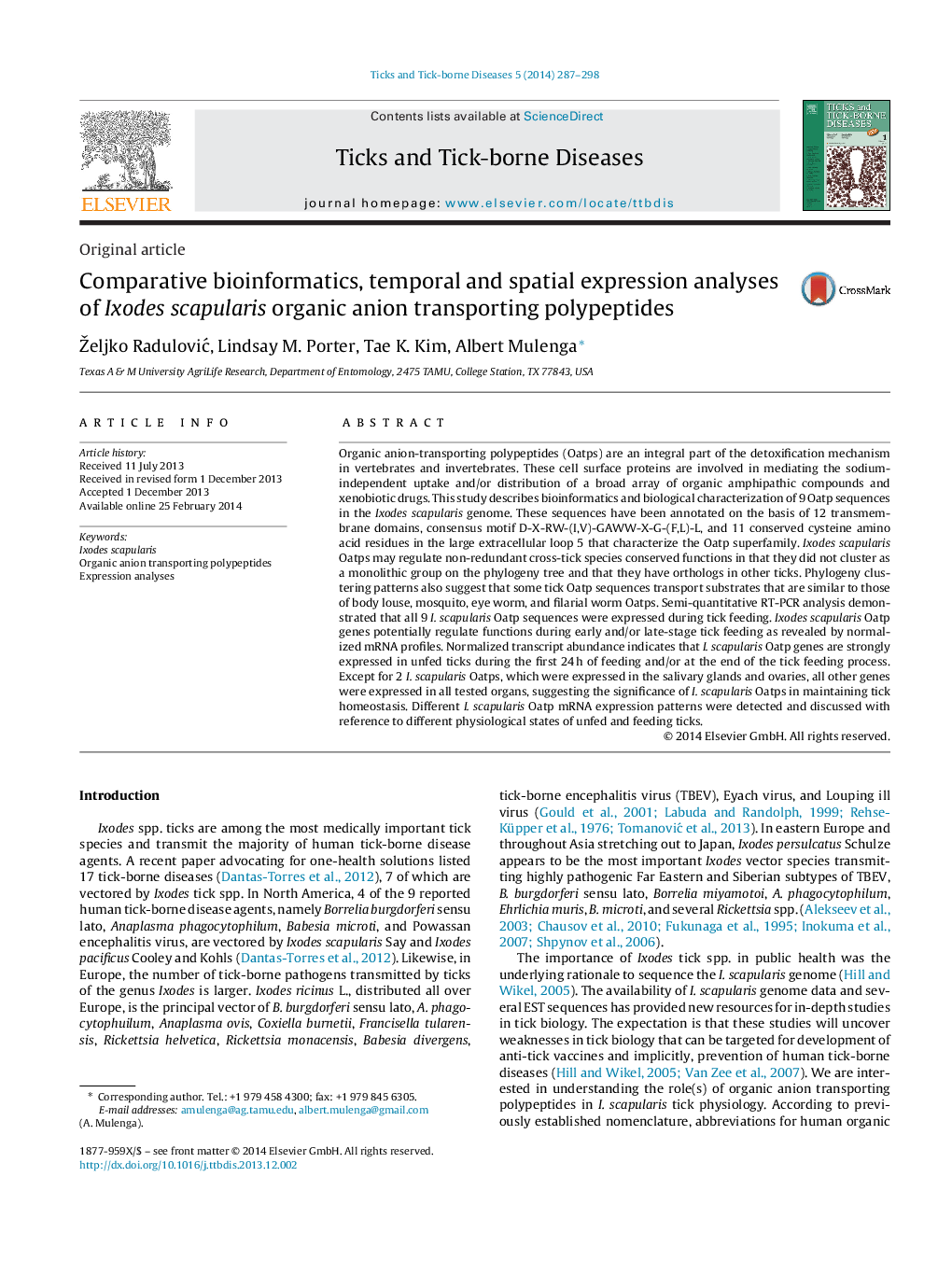| کد مقاله | کد نشریه | سال انتشار | مقاله انگلیسی | نسخه تمام متن |
|---|---|---|---|---|
| 2474082 | 1113113 | 2014 | 12 صفحه PDF | دانلود رایگان |
Organic anion-transporting polypeptides (Oatps) are an integral part of the detoxification mechanism in vertebrates and invertebrates. These cell surface proteins are involved in mediating the sodium-independent uptake and/or distribution of a broad array of organic amphipathic compounds and xenobiotic drugs. This study describes bioinformatics and biological characterization of 9 Oatp sequences in the Ixodes scapularis genome. These sequences have been annotated on the basis of 12 transmembrane domains, consensus motif D-X-RW-(I,V)-GAWW-X-G-(F,L)-L, and 11 conserved cysteine amino acid residues in the large extracellular loop 5 that characterize the Oatp superfamily. Ixodes scapularis Oatps may regulate non-redundant cross-tick species conserved functions in that they did not cluster as a monolithic group on the phylogeny tree and that they have orthologs in other ticks. Phylogeny clustering patterns also suggest that some tick Oatp sequences transport substrates that are similar to those of body louse, mosquito, eye worm, and filarial worm Oatps. Semi-quantitative RT-PCR analysis demonstrated that all 9 I. scapularis Oatp sequences were expressed during tick feeding. Ixodes scapularis Oatp genes potentially regulate functions during early and/or late-stage tick feeding as revealed by normalized mRNA profiles. Normalized transcript abundance indicates that I. scapularis Oatp genes are strongly expressed in unfed ticks during the first 24 h of feeding and/or at the end of the tick feeding process. Except for 2 I. scapularis Oatps, which were expressed in the salivary glands and ovaries, all other genes were expressed in all tested organs, suggesting the significance of I. scapularis Oatps in maintaining tick homeostasis. Different I. scapularis Oatp mRNA expression patterns were detected and discussed with reference to different physiological states of unfed and feeding ticks.
Journal: Ticks and Tick-borne Diseases - Volume 5, Issue 3, April 2014, Pages 287–298
